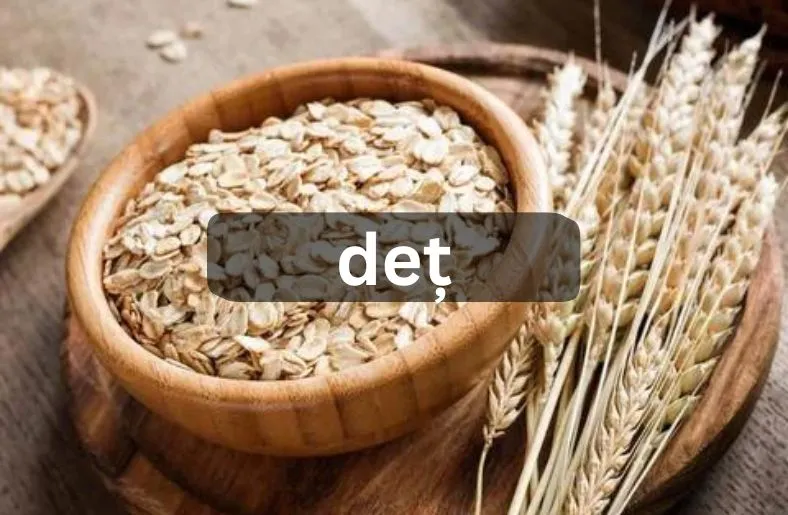Introduction
Welcome to the world of Deț Delights, where culinary tradition meets community bonding and cultural richness. Imagine a gathering filled with laughter and the aroma of flavorful dishes, each bite a journey into history and heritage. In this blog post, we embark on a delightful exploration of Deț, a term steeped in tradition yet vibrant with modern creativity.
As we delve into the heart of Deț, we uncover a tapestry of flavors, techniques, and stories passed down through generations. From ancient feasts to contemporary culinary innovations, Deț bridges the gap between the past and the present, offering a taste of cultural authenticity and gastronomic delight.
Join us as we unravel the secrets of Deț, from its origins in communal dining to its role as a symbol of togetherness and celebration. Let’s embark on a culinary journey that transcends borders and brings people closer through the universal language of food. Get ready to savor the essence of Deț Delights and discover why it continues to captivate taste buds and hearts alike.
The Origins of Deț
Delve into the roots of Deț, tracing its origins back through time. Centuries ago, communities gathered for shared meals, laying the foundation for Deț’s cultural significance. As people dined together, they not only nourished their bodies but also fostered bonds and traditions.
The term “Deț” itself embodies a spirit of unity and communal spirit. It reflects a time when food was more than sustenance; it was a means of connection and celebration. Over generations, Deț evolved, incorporating local ingredients and culinary techniques.
In different cultures, Deț took on diverse flavors and meanings. From ancient feasts to modern gatherings, its essence remained intact—bringing people together. The origins of Deț are intertwined with cultural identity and heritage, passed down through stories and recipes.
Today, Deț continues to be a symbol of togetherness and hospitality. It transcends borders, welcoming all to partake in its flavors and traditions. As we explore the origins of Deț, we discover a rich tapestry of culinary history and shared experiences.
The journey through Deț’s origins is a testament to the enduring power of food to unite and inspire. It reminds us of the simple joys of gathering around a table, sharing stories, and savoring the richness of life.
Types of Deț
Let’s explore the different variations of Deț, each offering a unique culinary experience. Traditional Deț recipes harken back to ancient times, preserving local flavors and customs. These recipes often use indigenous ingredients and cooking methods passed down through generations.
In contrast, modern Deț embraces innovation and creativity. While honoring tradition, it adapts to contemporary tastes and preferences. This fusion of old and new results in exciting flavors and culinary adventures.
Traditional Deț dishes vary widely across cultures. From hearty stews to flavorful rice dishes, each region adds its own twist. These recipes reflect the cultural diversity and heritage of their origins.
On the other hand, modern Deț experiments with global influences. Chefs combine traditional elements with international flavors, creating innovative and delicious meals. This evolution keeps Deț vibrant and appealing to a wide audience.
Whether traditional or modern, Deț remains a symbol of community and shared meals. It brings people together, fostering connections and celebrating culinary diversity. Each type of Deț offers a delightful journey through flavors, traditions, and cultural heritage.
ALSO READ >>> Mamgatoto Unveiled | Exploring African Flavors
Health Benefits of Deț
Exploring the health advantages of Deț unveils a treasure trove of benefits for both body and mind. Firstly, Deț dishes often feature nutritious ingredients such as whole grains, lean proteins, and fresh vegetables. These elements contribute to a balanced diet and provide essential nutrients for overall well-being.
Moreover, consuming Deț regularly can promote physical health in various ways. For instance, it aids in boosting the immune system, helping the body fight off illnesses and infections. Additionally, the inclusion of fiber-rich foods in Deț recipes supports digestive health, maintaining regularity and preventing digestive issues.
Furthermore, Deț is known for its positive impact on mental health. Sharing Deț meals with loved ones fosters social interaction and strengthens relationships. This communal dining experience reduces stress levels and promotes feelings of happiness and belonging.
In terms of specific benefits, the diverse ingredients in Deț dishes offer a range of vitamins, minerals, and antioxidants. These components support overall health by providing energy, supporting organ function, and reducing the risk of chronic diseases.
Transitioning to a Deț-based diet can lead to improved well-being, both physically and mentally. The combination of nutritious ingredients, social interaction, and cultural significance makes Deț a holistic approach to health and happiness.
How to Make Deț
Creating Deț dishes is a delightful journey that begins with gathering fresh ingredients. First, choose a variety of grains like rice or wheat as the base. Next, select an array of vegetables, legumes, herbs, and spices for added flavor.
Once you have all your ingredients, it’s time to prepare them. Begin by washing and chopping the vegetables, ensuring they’re clean and ready for cooking. Then, cook the grains according to package instructions until they’re tender and fluffy.
In a separate pan, sauté the chopped vegetables with aromatic herbs and spices. This step adds depth and richness to the dish. Consider adding protein sources like beans, tofu, or lean meats for a well-rounded meal.
Combine the cooked grains and sautéed vegetables in a large bowl, mixing them thoroughly. Allow the flavors to meld together for a few minutes before serving.
Finally, garnish your Deț dish with fresh herbs or a drizzle of olive oil for a finishing touch. Serve the dish hot and enjoy the wholesome flavors of Deț!
By following these simple steps, you can create delicious Deț meals that are nutritious and satisfying. Experiment with different ingredients and flavor combinations to discover your favorite Deț recipes.
Deț in Different Cultures
Deț is a culinary tradition that spans across diverse cultures, each adding its unique flair to this communal dining experience. In Mediterranean cultures, such as Greece and Turkey, Deț takes the form of a mezze, featuring an assortment of small dishes shared among diners. Similarly, in Indian cuisine, Deț is reflected in the thali, a platter with various curries, rice, and bread, symbolizing abundance and hospitality.
Moving to East Asia, countries like Japan embrace Deț through the izakaya, where a variety of small plates, known as tapas, are enjoyed alongside drinks. This concept promotes socializing and trying different flavors in a relaxed setting. In Latin America, Deț finds expression in dishes like the Brazilian feijoada or Mexican tacos, showcasing the region’s vibrant culinary heritage.
In African cultures, Deț manifests in communal meals like the Ethiopian injera, a spongy flatbread served with flavorful stews and vegetables. The act of sharing these meals symbolizes unity and strengthens familial bonds.
Across the globe, Deț serves as a universal language of togetherness, transcending borders and connecting people through food. Each culture’s interpretation of Deț reflects its values, traditions, and sense of community, making it a cherished part of culinary diversity worldwide.
Conclusion
In conclusion, Deț Delights encapsulates not just a culinary tradition but a profound cultural experience that transcends borders. From its origins rooted in communal dining to its modern-day adaptations, Deț embodies the essence of togetherness, celebration, and gastronomic delight. Through exploring the diverse types of Deț, the health benefits it offers, and its presence in different cultures, we uncover a rich tapestry of flavors, stories, and shared experiences. Whether enjoyed in traditional settings or with a contemporary twist, Deț continues to unite people and preserve cultural heritage, making it a timeless treasure in the world of culinary traditions.





